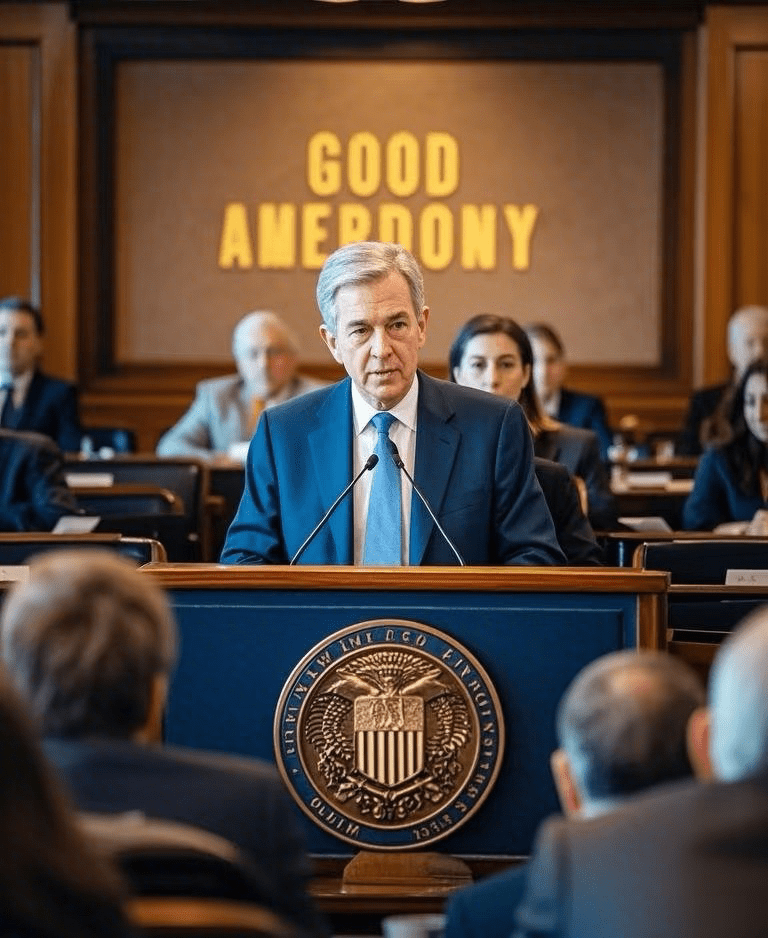The current core focus of the market is always centered around the Federal Reserve's interest rate decision. Recent data has shown significant differentiation: soft data (such as confidence indices and various survey data) is performing relatively strong, sending positive signals; however, hard data (employment, consumption, production, and other real indicators) is relatively weak, raising some concerns.
In the face of this differentiation, Powell made it clear: the Federal Reserve will not act rashly based on a single data point, nor will it engage in preventive operations; it will only formulate policies based on comprehensive data. This stance has been interpreted by many as 'the Federal Reserve will only act when there are real problems in the economy,' suggesting a lag in its decision-making.
However, a deeper analysis will reveal that this is not indecisiveness on the part of the Federal Reserve, but rather stems from a sufficient confidence in the U.S. economy. The core logic has two points:
1. The inflation pressure caused by tariffs is likely a one-time shock and will not create a sustained drag on long-term inflation trends, so there is no need to overly worry about its long-term impact.
2. From the perspective of key hard data such as inflation indicators, the U.S. economy remains quite resilient, contrasting with soft data that reflects market sentiment. In short, current market sentiment may be affected by short-term fluctuations, but the real economic fundamentals are far more robust than expected.
Powell's repeated emphasis on 'wait and see' essentially allows the market to digest the data differentiation on its own—either waiting for comprehensive data to validate that soft data is overly pessimistic or waiting for soft data to self-correct to a reasonable range. This superficial 'wait-and-see' conveys a core message: 'the Federal Reserve has not found real dangers in the economy, so there is no need to act hastily.'
From the perspective of market impact, the significance of not lowering interest rates far exceeds the notion of 'not adjusting policies for now' itself, and can be interpreted from three aspects:
1. Verifying the robustness of fundamentals: Not lowering interest rates directly indicates that inflation has not spiraled out of control and that the economy has not encountered significant risks; otherwise, the Federal Reserve would not choose to remain inactive.
2. Stabilizing market confidence: This decision is based on recognition of economic resilience and can effectively alleviate market worries about 'economic recession,' maintaining investor confidence.
3. Retaining policy space: The Federal Reserve currently still has 4.25 percentage points of interest rate adjustment space; if the economy does encounter risks in the future, it can quickly intervene to stabilize the market, providing a 'safety net.'
Therefore, from a long-term investment perspective, not lowering interest rates has instead become the biggest support for the U.S. stock and cryptocurrency markets. It has sent two key signals to the market: first, the economy itself is not in trouble; second, there is still the capacity at the policy level to respond to risks, and there is no need for excessive panic in the short term.
It should be clear that this conclusion is based solely on a long-term perspective. The short-term market may still fluctuate due to emotions, single data points, and other factors, but in the long run, 'not lowering interest rates' represents 'sufficiently strong fundamentals and policy buffers,' which is the core guarantee for the stable operation of the market.$BTC $ETH #亚洲家族办公室加密资产配置 #美国初请失业金人数 #美联储7月会议纪要 

